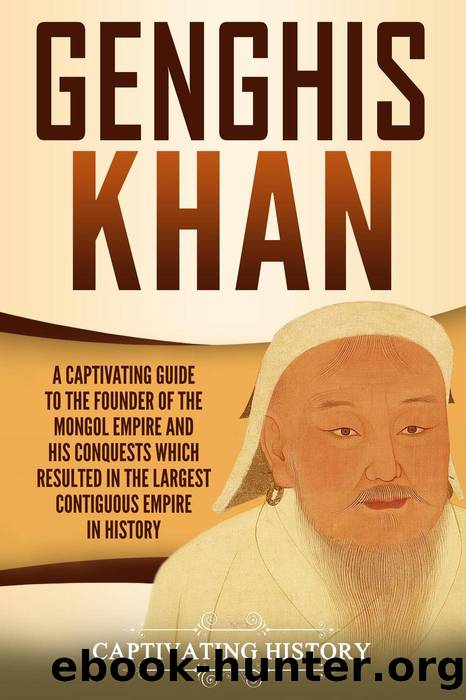Genghis Khan: A Captivating Guide to the Founder of the Mongol Empire and His Conquests Which Resulted in the Largest Contiguous Empire in History by Captivating History

Author:Captivating History
Language: eng
Format: epub
Publisher: Captivating History
Published: 2019-09-30T16:00:00+00:00
Chapter 7 – Innovation
The early days of Genghis Khan’s rule were a time of rapid social change and development. Everything had changed for the tribal peoples of Mongolia, and while Genghis Khan was expanding his empire by rapid military action, he did not turn his back on life at home. New laws and rules had been implemented, but Genghis was also deeply involved with the process of developing new technology, systems, and ways to make life easier. These innovations had a lasting impact, and many of them underpin aspects of the modern world; we are all still affected by the changes that took place under Genghis Khan back in the 13th century.
As the Mongol Empire spread, the Mongols encountered new innovations and technologies from other places. Not only was this great for the military, which benefitted from better weapons and new tactics, but it was also revolutionary for the people of the empire, who were able to adopt and adapt new ideas. From a new universal currency using paper money to agricultural development, trade, writing, and even an early postal service, the Mongol Empire was a hive of innovation.
Money
Just as Genghis unified the tribes, he also set about replacing local currencies with one Mongol currency. When he first came to power, there were many different types of currency, from bronze coins to silver pieces to a traditional bartering system where goods of one type were simply swapped for another type. When the tribes had been frequently warring with one another and were at risk from neighboring ruling dynasties, trade had been fraught with difficulties. Now that the tribes were unified under one all-powerful leader and infighting was strictly forbidden, there was a growing feeling of security. Security allowed trade to flourish, and so, currency became a more pressing concern than it had been before.
Genghis set in motion changes in the currency system which continued to evolve throughout his own lifetime and beyond. He is widely credited with spreading the concept of paper money. While paper money had been used in China prior to Genghis’ rule, the Mongol Empire can be credited with taking this new relatively new concept and spreading it across the continent.
Marco Polo, the famous Italian explorer and writer, visited the Mongol Empire when it was under the rule of Genghis’ grandson, Kublai Khan. Marco Polo was shocked to discover that the currency used was, in fact, made of paper. He famously reported that the Mongol Empire was forged using “might, force and the bark of trees.” Marco’s astonishment at a government-backed currency, rather than private currency, resulted in a detailed explanation of exactly how this system worked, right down to how the money itself was made. His stories amazed the Western world.
In The Travels of Marco Polo, Marco describes their process of making money as a kind of alchemy.
He makes them take of the bark of a certain tree, in fact of the Mulberry Tree, the leaves of which are the food of the silkworms—these trees being so numerous that whole districts are full of them.
Download
This site does not store any files on its server. We only index and link to content provided by other sites. Please contact the content providers to delete copyright contents if any and email us, we'll remove relevant links or contents immediately.
The Art of Coaching Workbook by Elena Aguilar(48044)
Trainspotting by Irvine Welsh(20046)
Twilight of the Idols With the Antichrist and Ecce Homo by Friedrich Nietzsche(17703)
Fangirl by Rainbow Rowell(7828)
Periodization Training for Sports by Tudor Bompa(7324)
Change Your Questions, Change Your Life by Marilee Adams(6637)
This Is How You Lose Her by Junot Diaz(5754)
Grit by Angela Duckworth(4729)
Red Sparrow by Jason Matthews(4655)
Asking the Right Questions: A Guide to Critical Thinking by M. Neil Browne & Stuart M. Keeley(4567)
Paper Towns by Green John(4165)
Room 212 by Kate Stewart(4099)
Ken Follett - World without end by Ken Follett(3968)
The Sports Rules Book by Human Kinetics(3582)
Housekeeping by Marilynne Robinson(3397)
The Motorcycle Diaries by Ernesto Che Guevara(3326)
Introduction to Kinesiology by Shirl J. Hoffman(3297)
Exercise Technique Manual for Resistance Training by National Strength & Conditioning Association(3288)
Double Down (Diary of a Wimpy Kid Book 11) by Jeff Kinney(3267)
